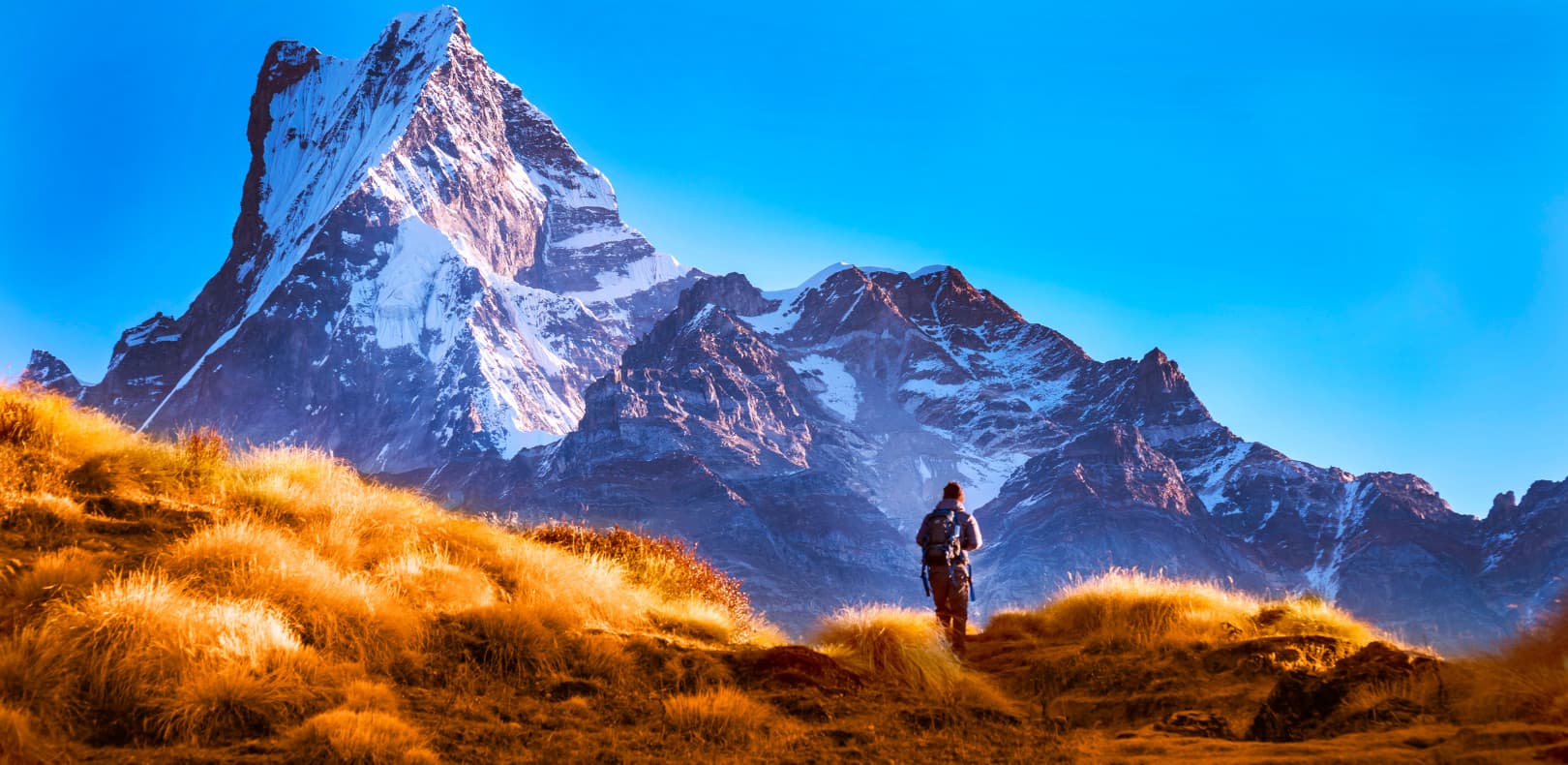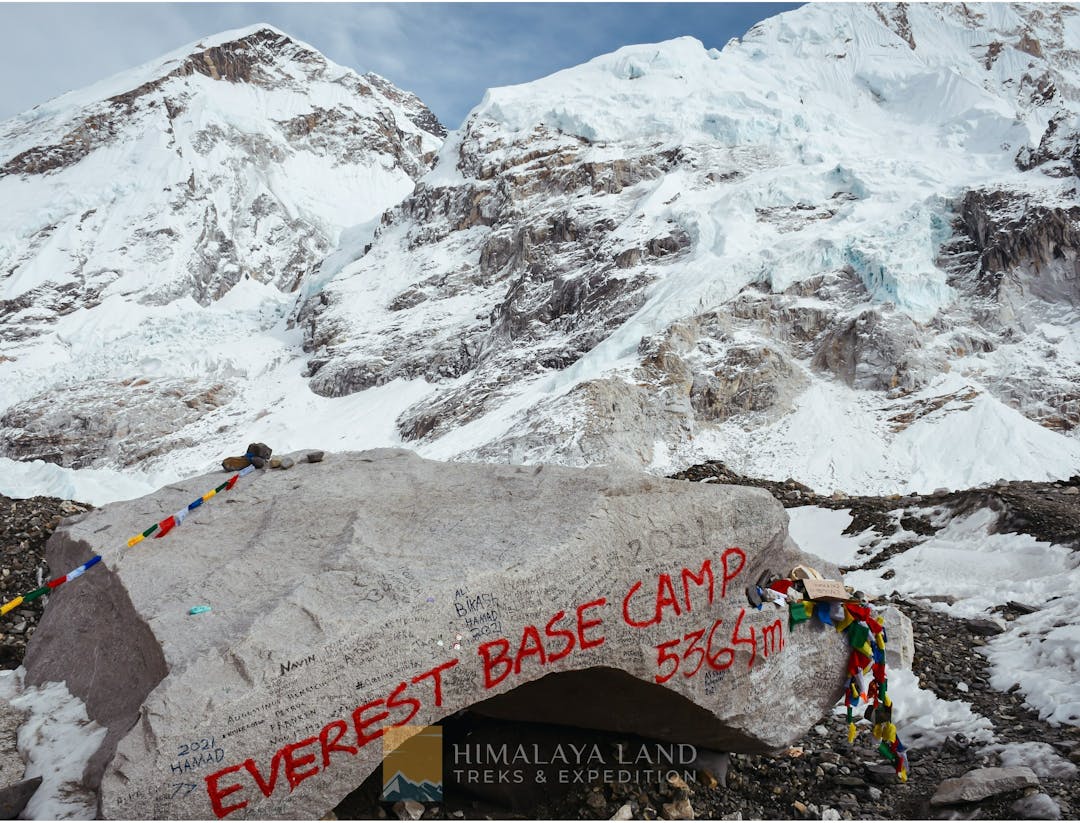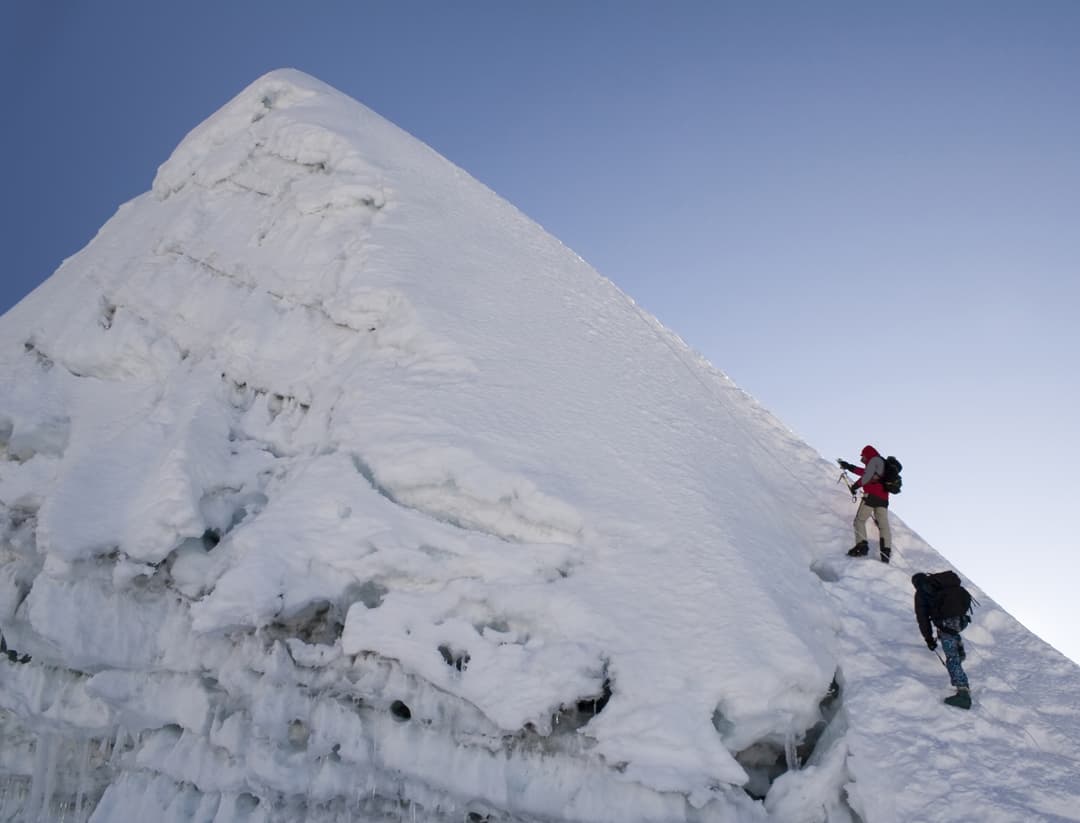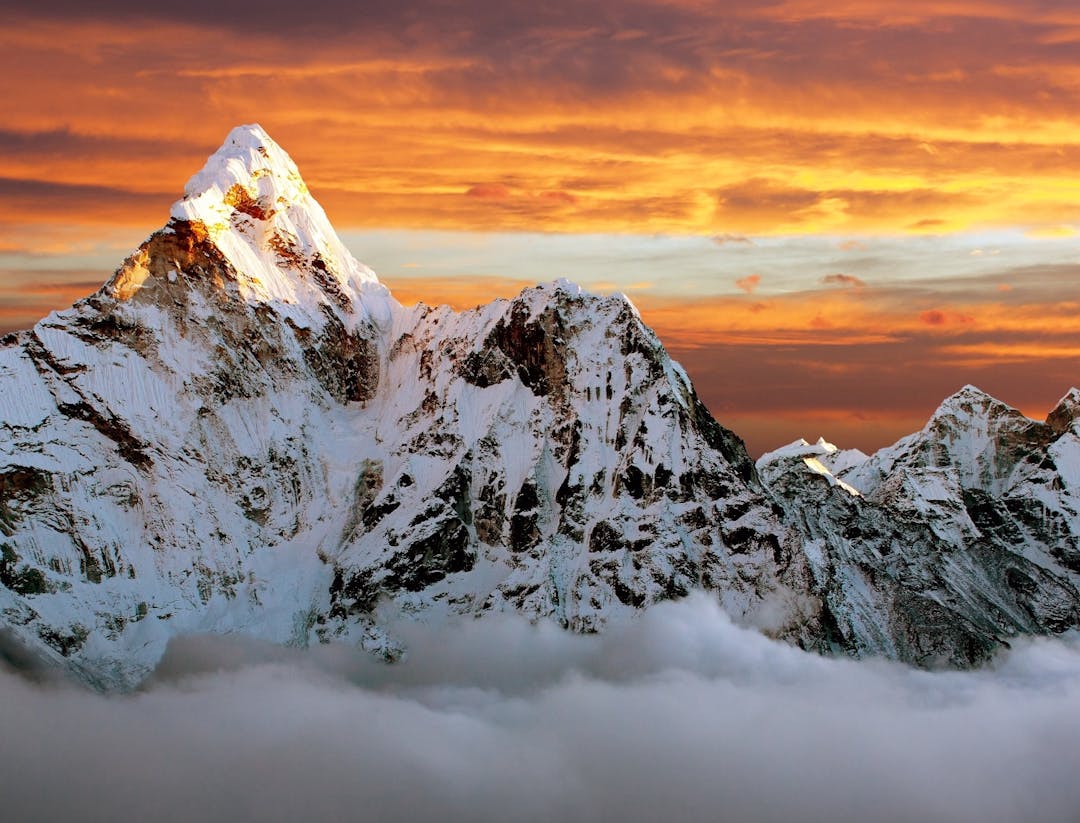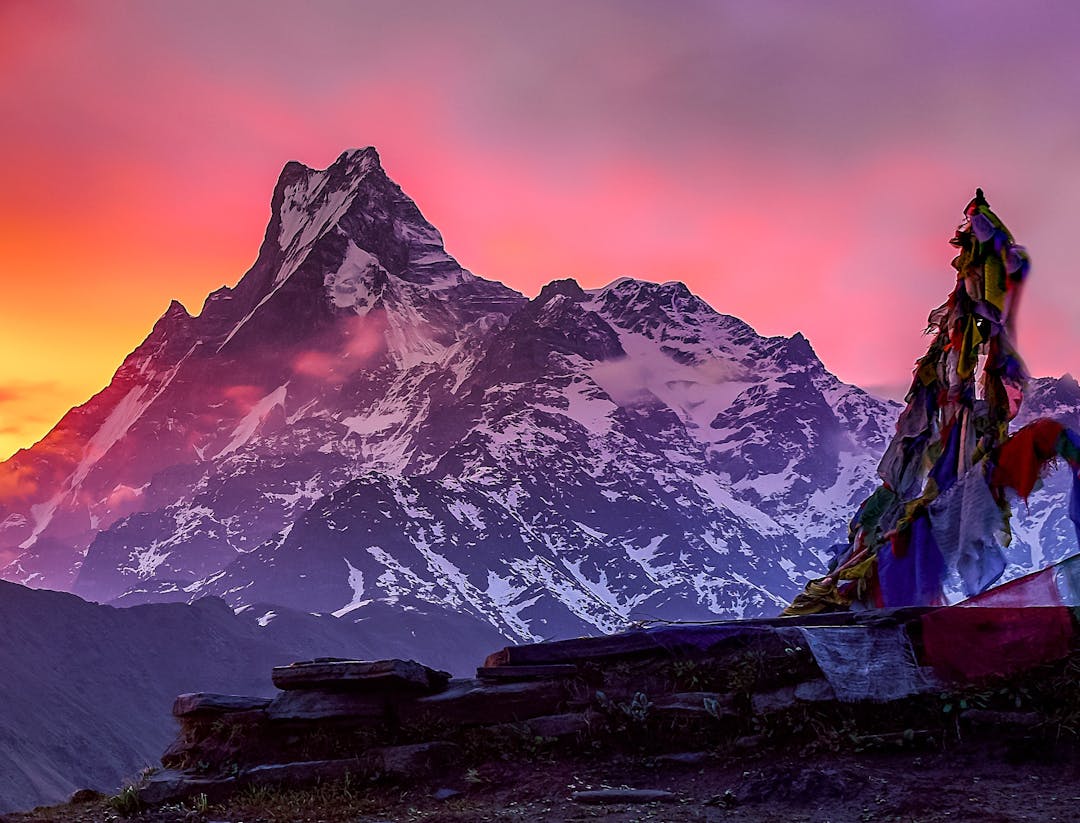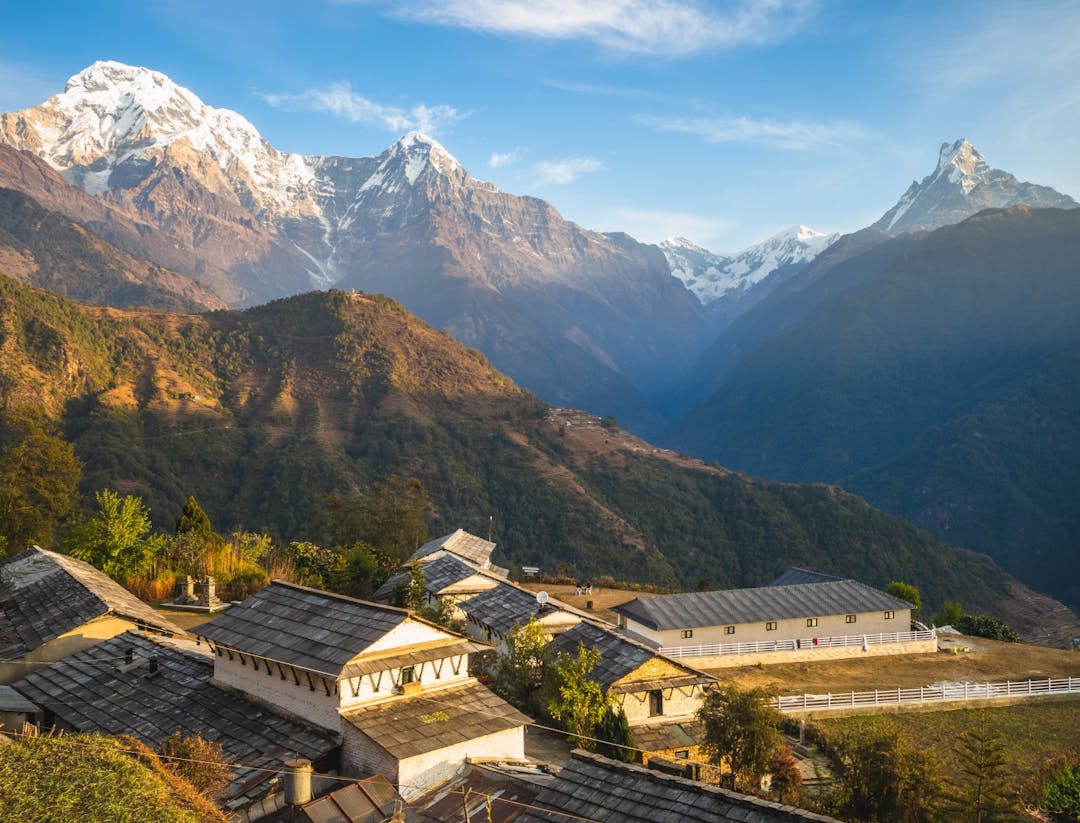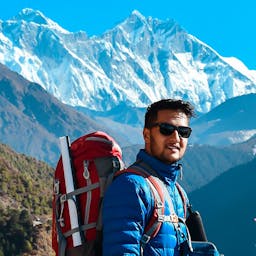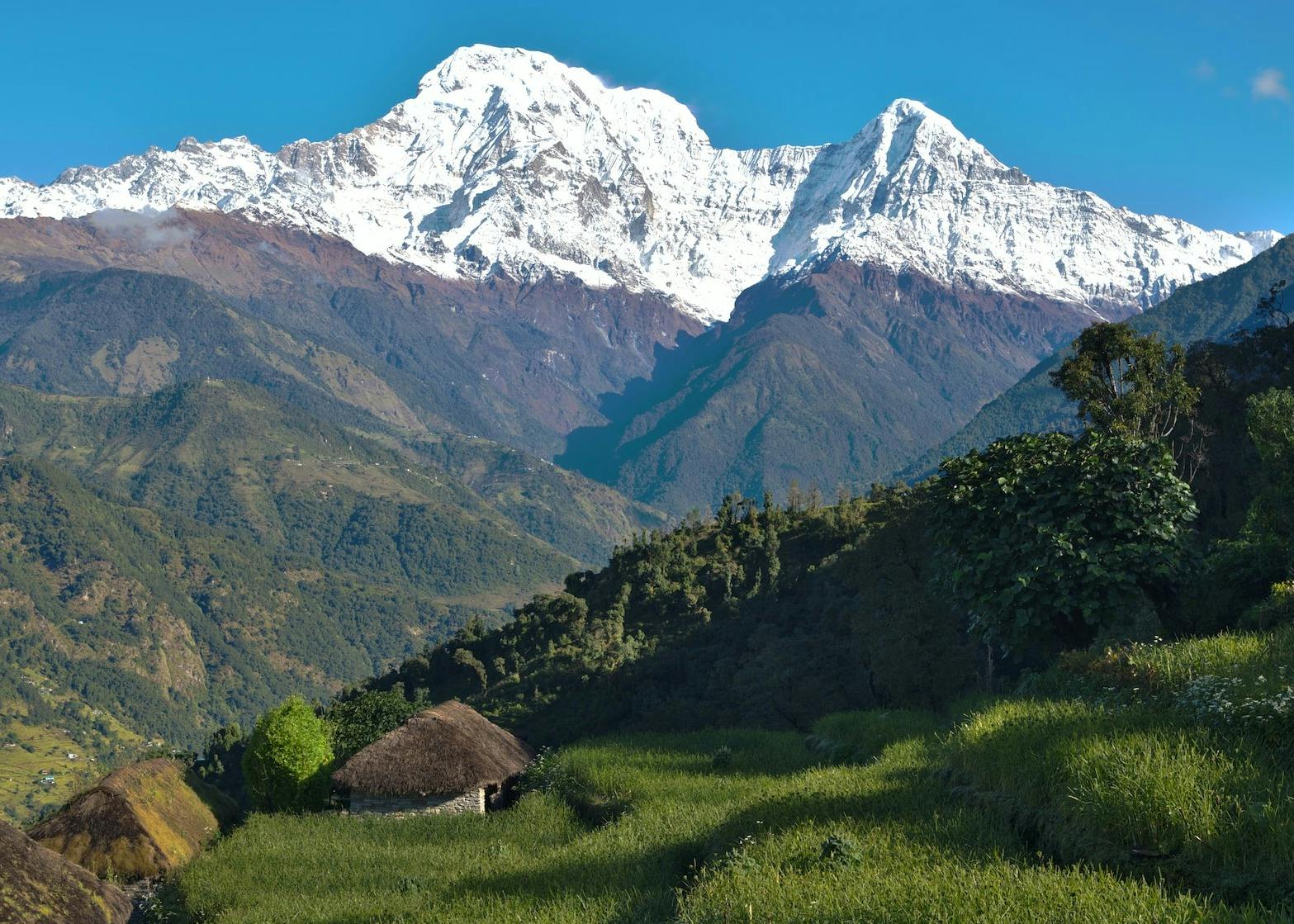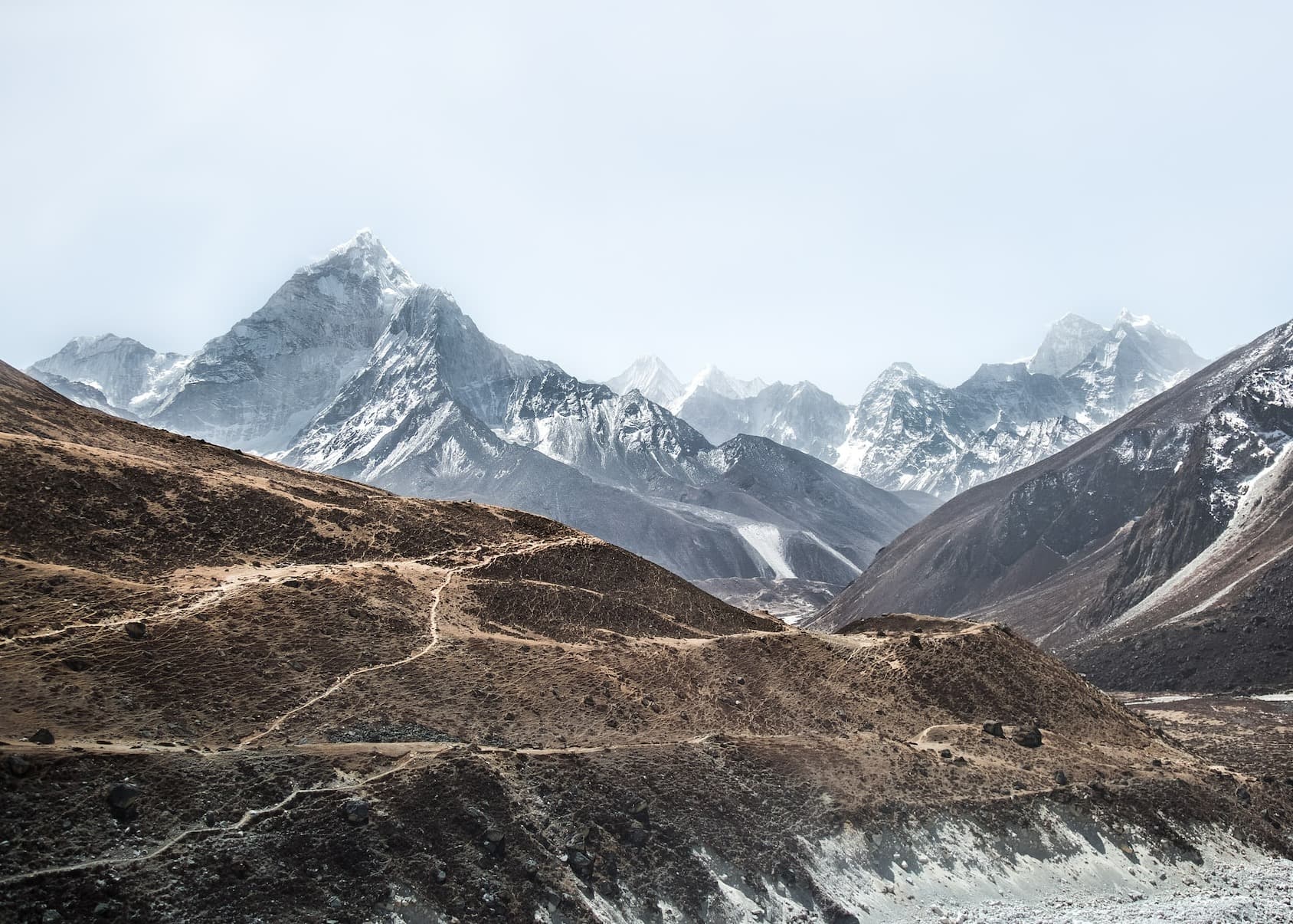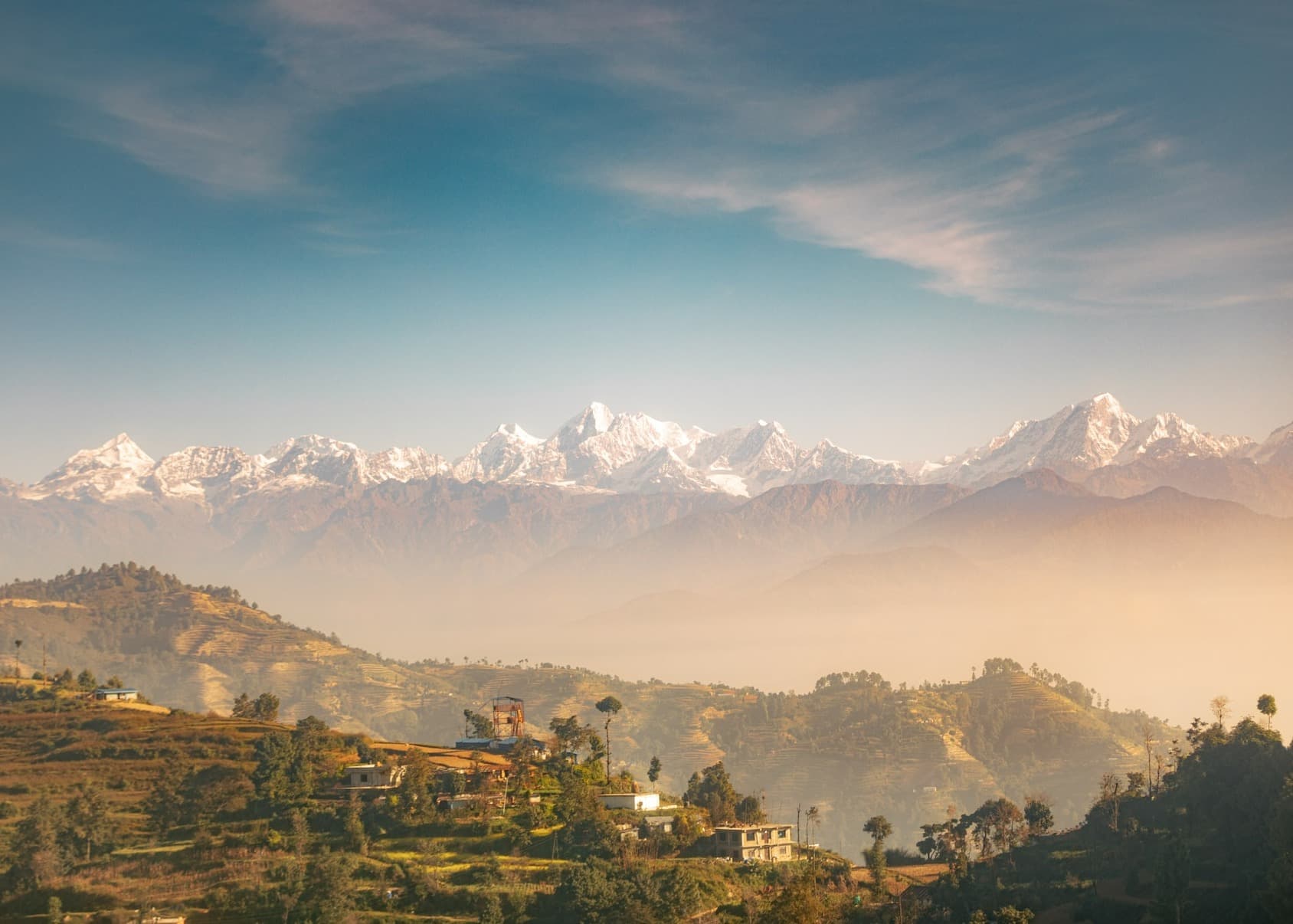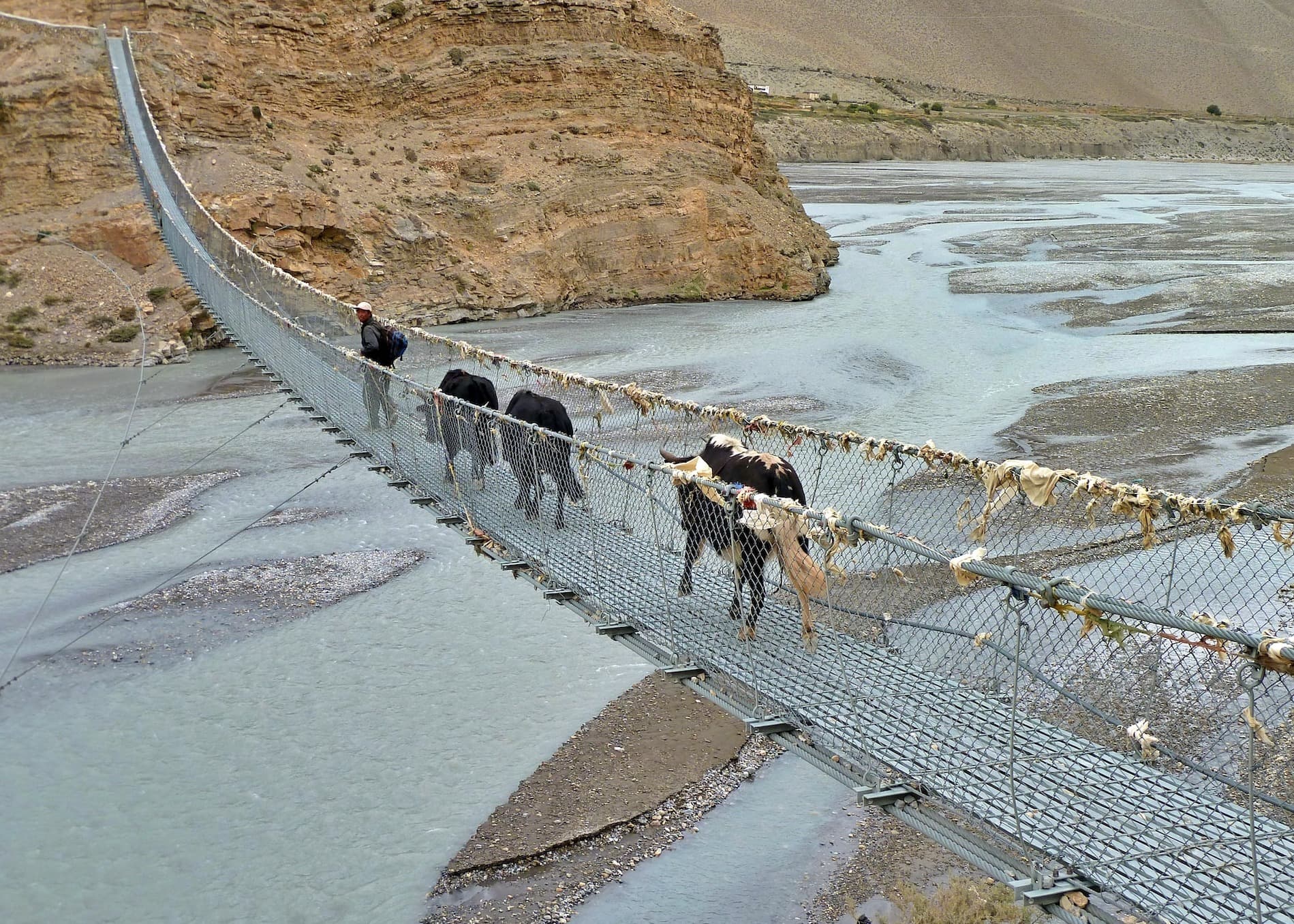- About Mardi himal trek
- People, Culture, and Food in mardi himal trek
- What are the major attraction of Mardi himal Trek?
- Difficulty level of Mardi himal trek
- Entry Points to Mardi himal
- Mardi himal Trek Itinerary
- Mardi Himal Trek cost
- Food and accommodation on Your mardi himal Trek
- Wi-Fi, Mobile Network and Electricity in Mardi himal trek
- Weather, Altitude sickness, acclimatization, and emergencies in Mardi himal Trek
- How to Prepare for Your mardi himal Trek
- Sustainable tourism in mardi himal Trek
About Mardi himal trek
Trekking in Nepal? Don't miss the Mardi Himal Trek! Mardi Himal Trek is a relatively new and off-the-beaten-path trekking route in Nepal. It is a short but rewarding trek that takes you through the lush forests, traditional villages, and stunning landscapes of the Annapurna region. Trekkers can witness the beauty of the Himalayan wildlife and flora, while enjoying comfortable teahouse accommodation and the support of experienced trekking guides and porters.
The trek starts from the beautiful city of Pokhara and follows the route through the villages of Dhampus and Pothana, passing through dense forests of oak, rhododendron, and bamboo. The trail then heads towards the Mardi Himal Base Camp, which is located at an altitude of 4,500 meters, offering stunning views of the Mardi Himal, Annapurna South, and Hiunchuli peaks.
The trek is considered a moderate trek, suitable for people of all ages and fitness levels, although some prior trekking experience is recommended. The best time to do the Mardi Himal Trek is during the spring (March to May) and autumn (September to November) when the weather is clear, and the views are stunning.
Overall, the Mardi Himal Trek is a perfect option for those who want to experience the beauty of trekking in Himalayas in a short time and without the crowds.
People, Culture, and Food in mardi himal trek
The Mardi Himal Trek offers a wonderful opportunity to explore the unique culture, traditions, and cuisine of the local people living in the Annapurna region of Nepal.
People: The trek takes you through several traditional Gurung and Magar villages where you can interact with the local people, learn about their lifestyle, and experience their warm hospitality. The Gurung and Magar people are known for their bravery, loyalty, and honesty. They have their unique culture, language, and customs that have been preserved for generations.
Culture: The local people in the Mardi Himal region celebrate several festivals and events throughout the year, including the Dashain and Tihar festivals. You can witness the traditional dances, music, and rituals during these festivals, which provide a fascinating insight into the local culture.
Food: The local cuisine in the Mardi Himal region mainly consists of dal bhat, a traditional Nepalese dish made with rice, lentils, and vegetables. You can also try other local dishes such as momos (dumplings), thukpa (noodle soup), and chow mein (stir-fried noodles). The food is generally simple, nutritious, and delicious, prepared with fresh ingredients and traditional cooking methods.
Overall, the Mardi Himal Trek provides an excellent opportunity to experience the rich cultural heritage and hospitality of the local people while enjoying the stunning natural beauty of the Himalayas.
What are the major attraction of Mardi himal Trek?
The Mardi Himal Trek is a hidden gem in the Annapurna region of Nepal that offers breathtaking views of the Himalayan peaks, pristine forests, and traditional villages. Some of the major attractions of the Mardi Himal Trek are:
Stunning Views: The trek offers breathtaking views of some of the highest peaks in the Annapurna region, including Mardi Himal, Annapurna South, Hiunchuli, Machhapuchhre (Fishtail), and Dhaulagiri. The panoramic views of these snow-capped peaks are truly awe-inspiring.
Beautiful Forests: The trail passes through lush forests of rhododendron, oak, and bamboo, which are home to a variety of flora and fauna, including exotic birds and butterflies.
Traditional Villages: The trek takes you through several traditional Gurung and Magar villages, where you can experience the unique culture, traditions, and hospitality of the local people.
Mardi Himal Base Camp: The trek culminates at the Mardi Himal Base Camp, located at an altitude of 4,500 meters. The base camp offers stunning views of the Mardi Himal peak and the surrounding Himalayan peaks.
Off-the-Beaten-Path: The Mardi Himal Trek is a relatively new and less-crowded trekking route, which offers a unique and authentic trekking experience away from the crowds.
Overall, the Mardi Himal Trek is an excellent choice for those who want to experience the natural beauty and cultural richness of the Annapurna region of Nepal in a short time.
Difficulty level of Mardi himal trek
The difficulty level of Mardi Himal Trek is considered to be moderate to challenging. The trek involves walking on rugged terrain with steep ascents and descents, and the altitude can also be a challenge for some trekkers. However, with proper acclimatization, physical fitness, and trekking experience, Mardi Himal Trek can be a rewarding and enjoyable adventure. It is recommended that trekkers have some prior trekking experience and undergo some physical training before embarking on the trek.
Entry Points to Mardi himal
There are several entry points to the Mardi Himal Trek, depending on the duration and route of your trek. The most common entry points are:
Kande: Kande is a small village located about an hour's drive from Pokhara. This is the most popular entry point for the Mardi Himal Trek, and the trek starts from here.
Phedi: Phedi is another entry point to the Mardi Himal Trek, located about a 30-minute drive from Pokhara. This entry point is ideal for those who want to start their trek from a lower altitude.
Dhampus: Dhampus is a traditional Gurung village located about an hour's drive from Pokhara. The trek starts from Dhampus and passes through several traditional villages before reaching the Mardi Himal Base Camp.
Landruk: Landruk is a traditional village located about a two-hour drive from Pokhara. The trek starts from Landruk and passes through the beautiful forests and traditional villages of the Annapurna region before reaching the Mardi Himal Base Camp.
Overall, the entry point you choose will depend on your trekking route and duration, as well as your personal preference and convenience.
Mardi himal Trek Itinerary
The Mardi Himal Trek itinerary can vary depending on the entry point, trekking route, and duration of the trek. Here is a sample itinerary for a 10-day Mardi Himal Trek:
Day 1: Arrive in Kathmandu and transfer to hotel
Day 2: Fly or drive to Pokhara (820m/2,690ft)
Day 3: Drive to Kande and trek to Australian Camp (2,060m/6,758ft)
Day 4: Trek from Australian Camp to Forest Camp (2,520m/8,268ft)
Day 5: Trek from Forest Camp to Low Camp (3,035m/9,957ft)
Day 6: Trek from Low Camp to High Camp (3,590m/11,778ft)
Day 7: Trek from High Camp to Mardi Himal Base Camp (4,500m/14,764ft) and return to High Camp
Day 8: Trek from High Camp to Siding Village (1,750m/5,740ft)
Day 9: Trek from Siding Village to Lumre and drive back to Pokhara
Day 10: Fly or drive back to Kathmandu
Note that this is just a sample itinerary and can be customized according to your preferences and time constraints. It is also important to acclimatize properly and follow a gradual ascent to avoid altitude sickness. Therefore, it is recommended to consult with a licensed trekking agency or guide before finalizing the itinerary.
Mardi Himal Trek cost
The cost of Mardi Himal Trek can vary depending on several factors, such as the duration of the trek, the level of service, the season, and the number of people in the trekking group.
Generally, the cost of Mardi Himal Trek can range from USD 1250 to USD 1500 per person. This cost usually includes the following:
- Trekking permit and TIMS card
- Transportation to and from the trek starting point
- Accommodation and meals during the trek
- Guide and porter services
- Trekking equipment (tent, sleeping bag, etc.)
Additional costs that may not be included in the trek package are:
- International flights to Nepal
- Travel insurance
- Visa fees
- Personal expenses (such as drinks, snacks, souvenirs, etc.)
It is important to choose a reputable trekking agency that provides transparent pricing and includes all necessary services in the trek package to avoid any hidden costs.
Food and accommodation on Your mardi himal Trek
During the Mardi Himal Trek, you will stay at tea houses or lodges, which are basic but comfortable accommodations offering a warm bed, blanket, and pillow. The tea houses also have communal areas for dining and socializing.
In terms of food, the tea houses offer a variety of dishes, including Nepalese, Indian, Tibetan, and Continental cuisine. Some of the popular dishes on the trek include dal bhat (rice and lentil soup), momos (dumplings), noodle soup, fried rice, and curry. Most tea houses also serve breakfast, which typically includes eggs, toast, porridge, and tea or coffee.
While the food and accommodation on the Mardi Himal Trek are basic, they are generally clean and hygienic. It is important to bring a water bottle and purifying tablets or a filter, as the water in the mountains is not safe to drink without treatment.
Overall, the food and accommodation on the Mardi Himal Trek are adequate for a comfortable and enjoyable trekking experience.
Banking ATMs and money in mardi himal trekking
There are limited banking and ATM facilities on the Mardi Himal Trekking route, so it is important to carry enough cash in Nepalese rupees to cover your expenses during the trek.
The last ATM is available in Pokhara, so it is recommended to withdraw enough cash before starting the trek. Some of the tea houses and lodges accept credit cards, but it is always better to carry cash as the availability of card facilities cannot be guaranteed.
The cost of accommodation and food on the Mardi Himal Trek can vary depending on the season, location, and level of comfort. It is recommended to carry at least 500-1000 Nepalese rupees per day for food and accommodation expenses.
There are no banks or ATMs on the trekking trail, so it is important to carry enough cash for the entire trek. Some tea houses may offer money exchange services, but it is not recommended to rely on them.
Overall, it is important to plan and budget your expenses carefully before starting the trek, and carry enough cash to cover your expenses during the trek.
Wi-Fi, Mobile Network and Electricity in Mardi himal trek
Mardi Himal Trek is a popular trekking route in Nepal, which takes you through remote mountain villages and stunning landscapes. However, due to its remote location, the availability of basic amenities like Wi-Fi, mobile network, and electricity can be limited.
Wi-Fi: Wi-Fi is not widely available on the Mardi Himal Trek. Some of the tea houses in the lower elevations may have Wi-Fi, but it may be slow and unreliable. As you trek higher up in the mountains, the chances of finding Wi-Fi decrease significantly. It's best to assume that there will be no Wi-Fi and plan accordingly.
Mobile Network: Mobile network coverage can also be limited in the Mardi Himal region. The signal strength may be weak or non-existent in some areas. Ncell and Nepal Telecom are the two main mobile network operators in Nepal, and they provide coverage in most of the trekking regions, including Mardi Himal. However, the coverage may be patchy in some areas, and you may need to climb to higher ground to get a signal.
Electricity: The availability of electricity in the tea houses along the Mardi Himal Trek can vary. In some of the lower elevation villages, you may find electricity available 24 hours a day, while in the higher elevations, electricity may be available for a few hours in the evening only. The tea houses may charge extra for charging your devices, so it's best to carry a portable charger or a power bank with you.
In summary, while trekking in the Mardi Himal region, it's best to be prepared for limited access to Wi-Fi, mobile network, and electricity. It's advisable to carry extra batteries or power banks to keep your devices charged, and to inform your loved ones that you may be out of reach for extended periods.
Weather, Altitude sickness, acclimatization, and emergencies in Mardi himal Trek
Mardi Himal Trek is a high altitude trek that involves ascending to an elevation of over 4000 meters. Therefore, it's important to be aware of the potential risks associated with high altitude trekking and to take the necessary precautions to ensure a safe and enjoyable trekking experience.
Weather: The weather in the Mardi Himal region can be unpredictable, and it's important to be prepared for all types of weather conditions. The best time to trek in the region is from March to May and from September to November when the weather is relatively stable. However, even during these months, you may experience sudden changes in weather, including snow, rain, and strong winds. It's advisable to pack appropriate clothing and gear to protect yourself from the elements.
Altitude Sickness: Altitude sickness, also known as Acute Mountain Sickness (AMS), is a common problem among trekkers who ascend to high altitudes too quickly. Symptoms of AMS include headaches, nausea, dizziness, and shortness of breath. To prevent AMS, it's important to take your time ascending to higher altitudes and to allow your body to acclimatize to the thinner air. Drinking plenty of fluids, avoiding alcohol, and eating high-carbohydrate foods can also help prevent AMS.
Acclimatization: Acclimatization is the process of adjusting to higher altitudes. It's important to build in acclimatization days into your trekking itinerary to allow your body to adjust to the higher altitude. This involves staying at the same altitude for a day or two before ascending to a higher altitude. During this time, you should take it easy and avoid strenuous activities.
Emergencies: In case of emergencies, there are a few options available on the Mardi Himal Trek. The tea houses along the trail may have first aid kits, but they may not have the necessary medications or equipment to handle serious medical emergencies. If you need emergency medical attention, you should contact the nearest rescue service or trekking agency. It's advisable to carry travel insurance that covers medical emergencies and evacuation in case of any serious medical issues.
In summary, while trekking in the Mardi Himal region, it's important to be aware of the weather conditions, altitude sickness, acclimatization, and emergency procedures. Proper preparation and taking the necessary precautions can help ensure a safe and enjoyable trekking experience.
How to Prepare for Your mardi himal Trek
Preparing for a trek to Mardi Himal requires both physical and mental preparation. Here are some tips to help you prepare for your Mardi Himal trek:
Physical preparation: Trekking in the Mardi Himal region involves ascending to high altitudes, and therefore, it's important to be physically fit. You should engage in regular exercise at least three to four months before the trek. You can try aerobic exercises like jogging, cycling, or swimming, and also include strength training exercises like squats, lunges, and push-ups. It's also recommended to do some hikes in your local area before the trek to prepare your body for the rigors of trekking.
Mental preparation: Trekking can be physically and mentally challenging, and it's important to have the right mindset. You should prepare yourself mentally for the long hours of trekking and the challenges of trekking at high altitudes. Having a positive attitude and mental strength can help you push through difficult times during the trek.
Pack appropriate gear: It's important to pack appropriate gear for the trek, including warm clothing, waterproof jackets, sturdy trekking shoes, a hat, sunglasses, and a backpack. You should also carry a first aid kit, sunscreen, and insect repellent.
Stay hydrated: It's important to stay hydrated during the trek, especially at higher altitudes. You should carry a water bottle and drink plenty of fluids, including water and tea, to avoid dehydration.
Acclimatize properly: To avoid altitude sickness, it's important to acclimatize properly during the trek. This involves ascending slowly and taking rest days at higher altitudes to allow your body to adjust to the thinner air.
Plan ahead: It's important to plan ahead for the trek, including booking your accommodation and transport in advance. You should also research the trekking route, weather conditions, and potential hazards.
In summary, preparing for a trek to Mardi Himal requires physical and mental preparation, appropriate gear, staying hydrated, acclimatizing properly, and planning ahead. Following these tips can help ensure a safe and enjoyable trekking experience.
Sustainable tourism in mardi himal Trek
Sustainable tourism is an important aspect of responsible travel, and it's essential to promote sustainable tourism practices while trekking in the Mardi Himal region. Here are some ways to promote sustainable tourism while trekking in Mardi Himal:
Respect local culture and customs: The Mardi Himal region is home to indigenous communities, and it's important to respect their culture and customs. This includes dressing modestly, asking for permission before taking photographs, and respecting local traditions.
Use eco-friendly practices: It's important to use eco-friendly practices while trekking in the Mardi Himal region. This includes carrying reusable water bottles, avoiding single-use plastics, and using eco-friendly toiletries. You can also choose eco-friendly accommodation options that prioritize sustainability and environmental protection.
Support local businesses: Supporting local businesses is an important aspect of sustainable tourism. You can buy locally made handicrafts and souvenirs, eat at local restaurants, and use local services like guides and porters. This helps support the local economy and promotes sustainable tourism.
Leave no trace: It's important to leave no trace while trekking in the Mardi Himal region. This means carrying out all your trash and litter, and avoiding damaging the environment. You should also avoid picking flowers, plants, or disturbing wildlife.
Conserve energy: Conserving energy is an important aspect of sustainable tourism. You can conserve energy by turning off lights and appliances when not in use, using public transportation, and walking or cycling instead of driving.
Support conservation efforts: The Mardi Himal region is home to a diverse range of flora and fauna, and it's important to support conservation efforts. You can support conservation efforts by donating to local conservation organizations, participating in community conservation projects, and respecting protected areas.
In summary, sustainable tourism practices are essential while trekking in the Mardi Himal region. Respecting local culture and customs, using eco-friendly practices, supporting local businesses, leaving no trace, conserving energy, and supporting conservation efforts can help promote sustainable tourism and protect the environment.

